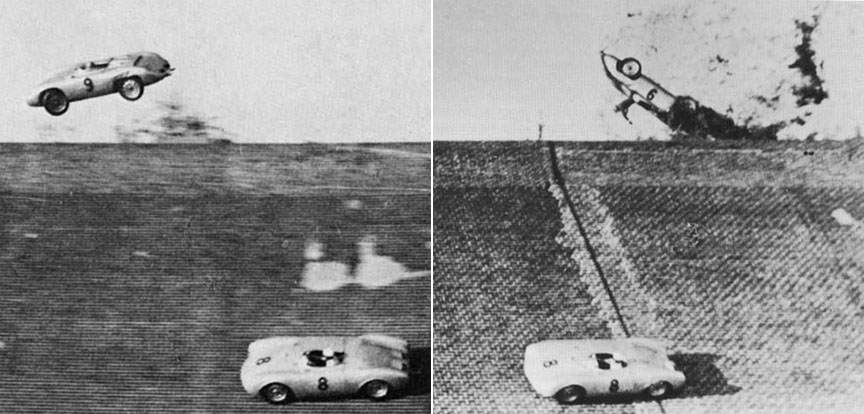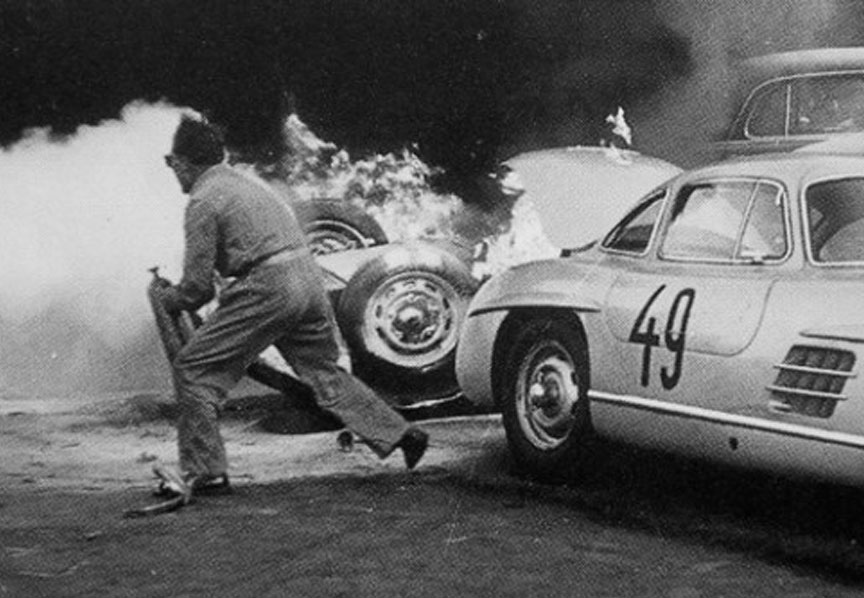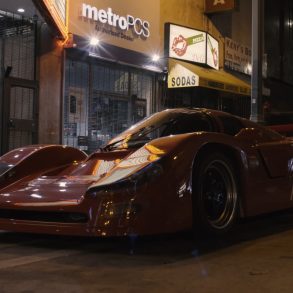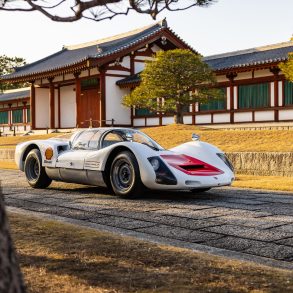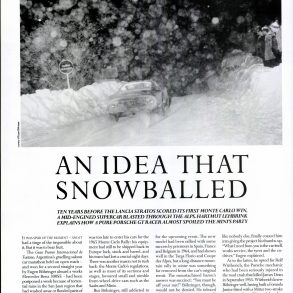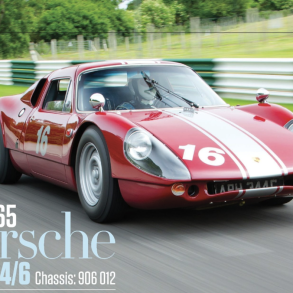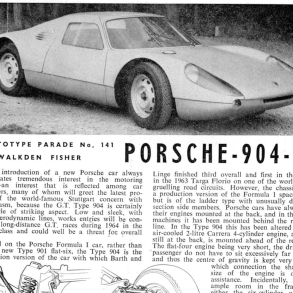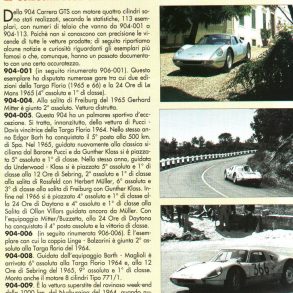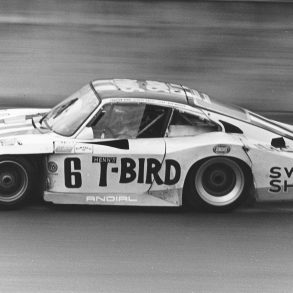Porsche 645 Spyder (1956)
Overview
Premiere on July 22, 1956 at Solitude race track near Stuttgart, the Porsche 645 Spyder was planned as a successor to the Porsche 550. The car was discontinued in favor of the revised 550A and the Porsche 718. The only example completed, nicknamed “Mickey Mouse”, was destroyed in a crazy crash.
The one off prototype used one of the spare 550 frames as its base (chassis 550-098). Known as Type 645, it was the beginnings of the new Type 718 Porsche with a shorter wheel base and unique suspension. The very small frontal area, along with the surface oil cooler and the welded magnesium body ‘skin’ used for the first time, made it particularly aerodynamic.
The Avus circuit with its banked north curve track paved with dark red stones was wrought with danger even for experienced drivers. On 16 September 1956, von Frankenberg in his modified race number 9, Type 645 spyder led spyder number 8 driven by von Trips by some 30 yards, both running above the white line. The spyder veered and next thing everybody saw was the Type 645 shot into the air and spun several times. Von Frankenberg was thrown clear of the cockpit in mid air and somehow survived. The car crash landed next to a Mercedes 300 SL and burst into flames of poisonous white magnesium.
The Details
There were some unique body and chassis ideas implemented by Porsche. To reduce the car’s frontal area from that of the 550 the front track was narrower by 100 mm (3.9 in) at 1,190 mm (46.9 in) and the rear by 140 mm (5.5 in) at 1,150 mm (45.3 in). At 2,000 mm (78.7 in), the car’s wheelbase was also shorter than that of the 550. Klie’s design wrapped the bodywork closely around the chassis.
To reduce drag, the air inlet for the oil cooler was eliminated. Instead, the entire surface of the front hatch panel was converted into a cooler, with a pattern of hollow passages soldered to its underside and through which oil was circulated, radiating heat out the unpainted surface of the panel. The body was made of magnesium, which is lighter but more fragile than aluminum. The right side of the car did not have a door, as a fuel tank was installed on that side of the cabin. The chassis was a space frame constructed of steel tube, a technology that would also appear in the second generation 550, the 550A/1500 RS. A bulge in the centre of the rear bodywork provided clearance for the mid-mounted engine’s vertical fan. There were also two rear facing openings to feed air to the carburetors on each side, and a horizontal slot in the rear deck for cooling air. The concentration of masses in the centre of the car resulted in a low polar moment of inertia.
The 645’s front suspension used Porsche’s traditional upper and lower transverse torsion bars and upper and lower trailing arms. The rear suspension was significantly different than that of earlier Spyders. It consisted of familiar Porsche-style trailing arms and lateral torsion bars but added upper and lower lateral links. Both upper and lower links angled slightly backwards to attach to the hubs, and while the lower ones were parallel to the ground, the upper ones sloped downwards at a 13° angle towards the car’s centre-line. The car’s half-shafts had Hooke-style outer joints and pot-style inner joints that could accommodate changes in length.
The vehicle was powered by one of Fuhrmann’s earlier projects, the Type 547 engine. This 1.5 litre air-cooled four-cylinder boxer engine had four camshafts; two per cylinder head. The exhaust camshafts were driven by layshafts that took power from a countershaft in the central crankcase below the crankshaft, while the intake camshafts were driven by vertical shafts from the exhaust camshafts, all of which was tied together by an assortment of sprockets and bevel gears. The engine also had two sparkplugs per cylinder, powered by a dual ignition with two ignition coils. Feeding fuel and air were two double-barrel Weber 40 DCM carburetors. In the 645 the engine produced 99 kW (132.8 hp) at 7200 rpm, and 145 N⋅m (106.9 ft⋅lb) at 5900 rpm.
The version of the 547 engine used in the 645 was an early model that drove its distributors from the ends of the camshafts. Newer 547s drove their distributors from the nose of the crankshaft, but that new arrangement took more space under the deck than the old; space that was not available in the 645’s tight engine compartment. The car would be limited to using the older engines, giving up about 20 hp (15 kW) in the process.
Technical Specs & Performance
| Porsche 645 Spyder: | Data |
|---|---|
| Engine: | Flat, four-cylinder four-stroke boxer engine (Typ 547) |
| Displacement: | 1,498 cc (91.4 cu in) |
| Bore × Stroke: | 85.0 mm × 66.0 mm (3.3 in × 2.6 in) |
| Maximum power: | 99 kW (134.6 PS; 132.8 hp) at 7200 rpm |
| Maximum torque: | 145 N⋅m (106.9 ft⋅lb) at 5900 rpm |
| Compression ratio: | |
| Valvetrain: | Lower countershaft, layshafts to exhaust camshafts, vertical shafts to intake camshafts. DOHC. 2 valves per cylinder. |
| Cooling: | Air-cooled (vertical fan) |
| Gearbox: | No information |
| Brakes: | No information |
| Front suspension: | Upper and lower transverse torsion bars, upper and lower trailing arms, tubular shock absorbers |
| Rear suspension: | Blade-style trailing arms and transverse torsion bars, angled upper and lower lateral links, tubular shock absorbers |
| Body/chassis: | Tubular steel spaceframe, magnesium bodywork |
| Track front/rear: | 1,190 / 1,150 mm (46.9 / 45.3 in) |
| Wheelbase: | 2,000 mm (78.7 in) |
| Wheels and tires f/r: | 5.00–16 RS front / 5.25–16 RS; 5.50–16 rear |
| Dimensions (L×W×H): | 3,775 mm × 1,420 mm × 900 mm (148.6 in × 55.9 in × 35.4 in) |
| Weight: | 550 kg (1,212.5 lb) |
| Top speed: | 260 km/h (161.6 mph) |
The Full Story
The Porsche type 645 was a very special and beautiful prototype. It was the link between the 1956 550 A Spyder and the 1957 718 RSK Spyder. The idea was to make a similar car like the 550, but faster. This meant that with the 550’s 1.5-litre Fuhrmann 4-cam engine, the 645 had to be smaller, lighter, lower, more aerodynamic. The 645 was built around a space frame made of tubes. The rear suspension was new, now with coil springs instead of torsion bars. Both the front and rear tracks were narrower and the wheelbase was shorter. The front and rear lamps were mounted inside the body and covered with clear glass flush with the body – nice! Gone was the front fender design of the 550 (that was later implemented on the 901/911).
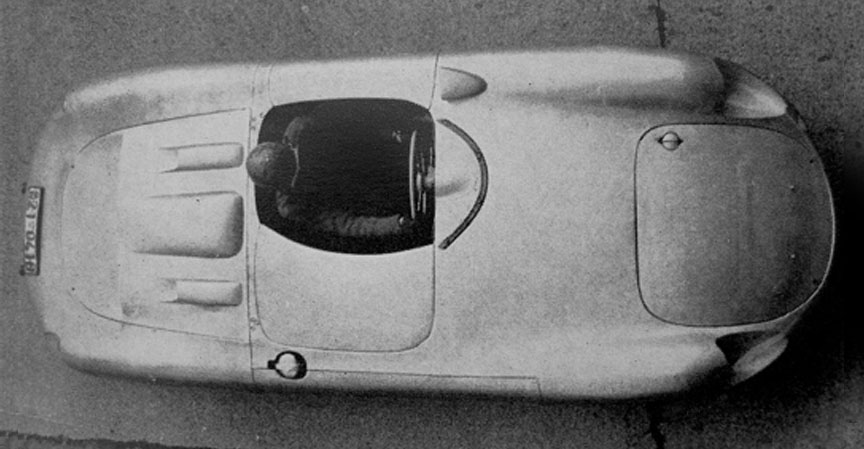
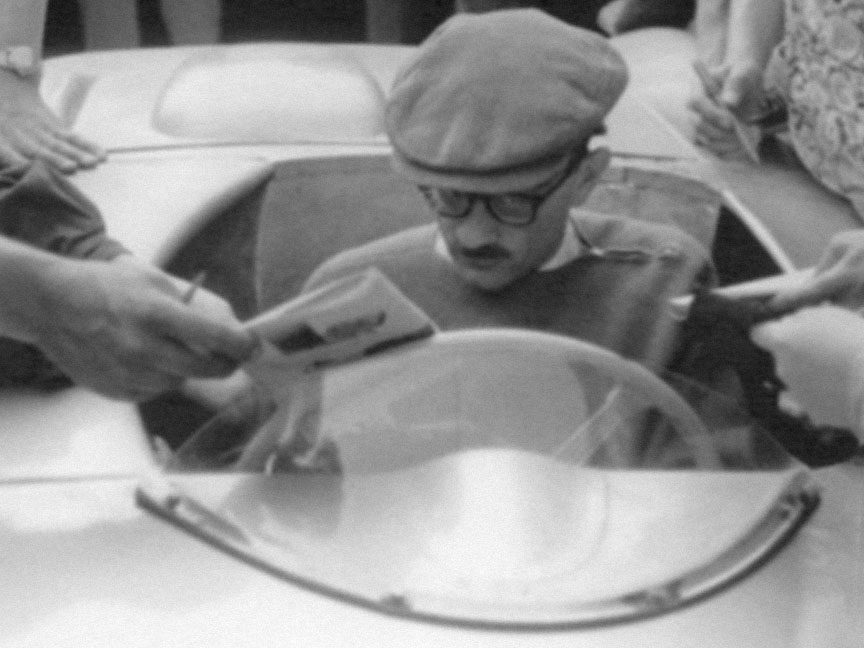
The 645 was faster than 550, but didn’t handle as well, so Porsche’s star drivers chose not to use it. The new prototype spyder was used by Richard von Frankenberg, a racing driver who was also the editor of the Porsche Christophorus magazine.
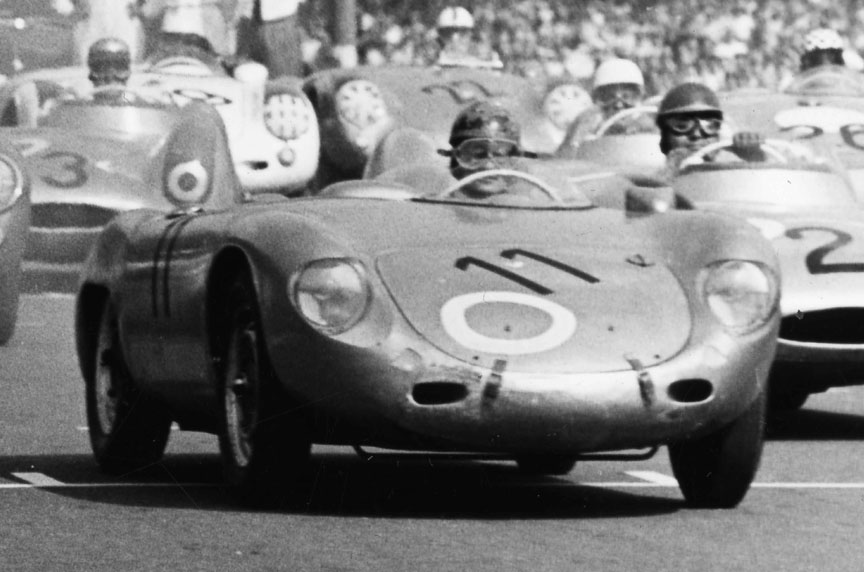
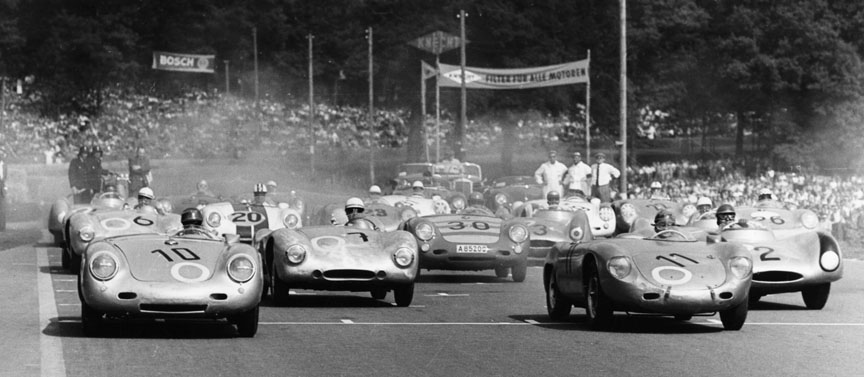
Next time the 645 was used on September 16, 1956, at the German Sportscar Championship round 6 on AVUS (Berlin GP). AVUS was a high speed track consisting of two opposite Autobahn straights. One of the curves was heavily banked, up to 43 degrees, to maintain very high speed.
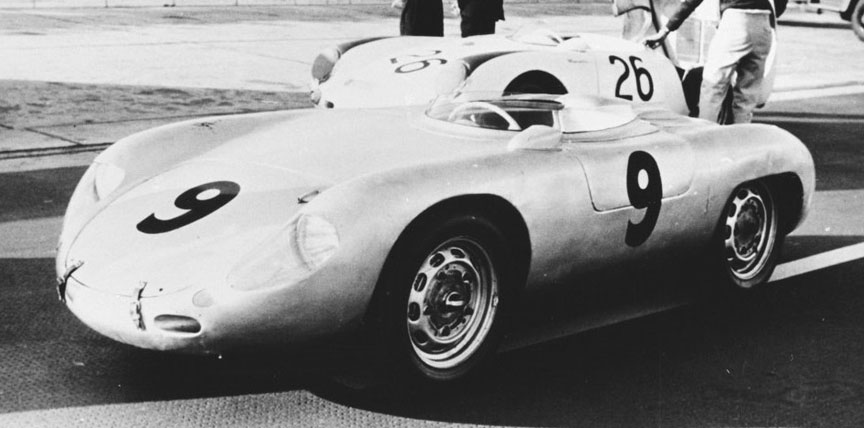
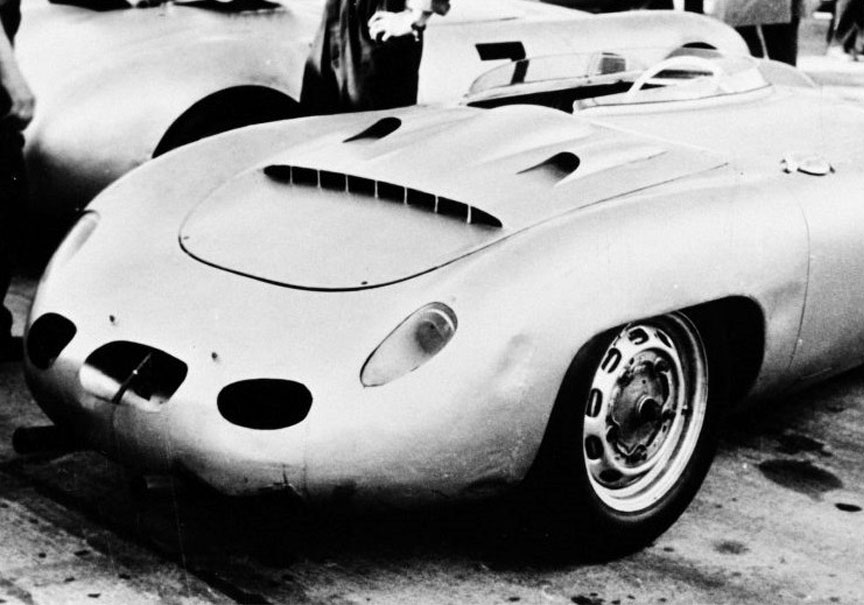
In the race something strange and incomprehensible happened – on the high bank, Frankenberg’s car drove off the track like remote controlled – there was no counter-action from the driver to avoid the disaster.
Looking the footage, no braking can be seen. If the brakes failed, then why there’s no steering back to the track? Frankenberg said after the accident that he does not remember anything. Did he lose consciousness while driving the car through the banking where the driver is under really heavy G-forces?
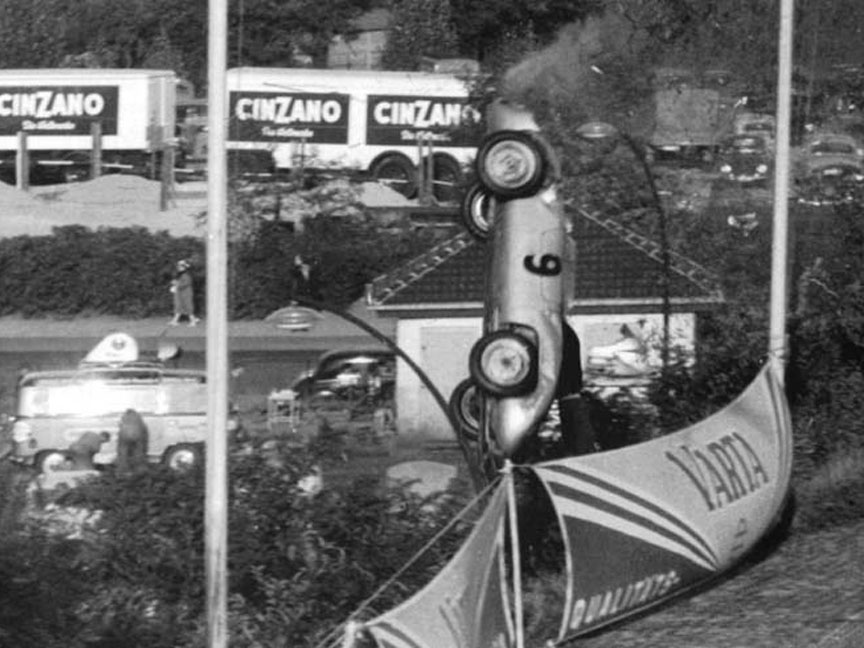
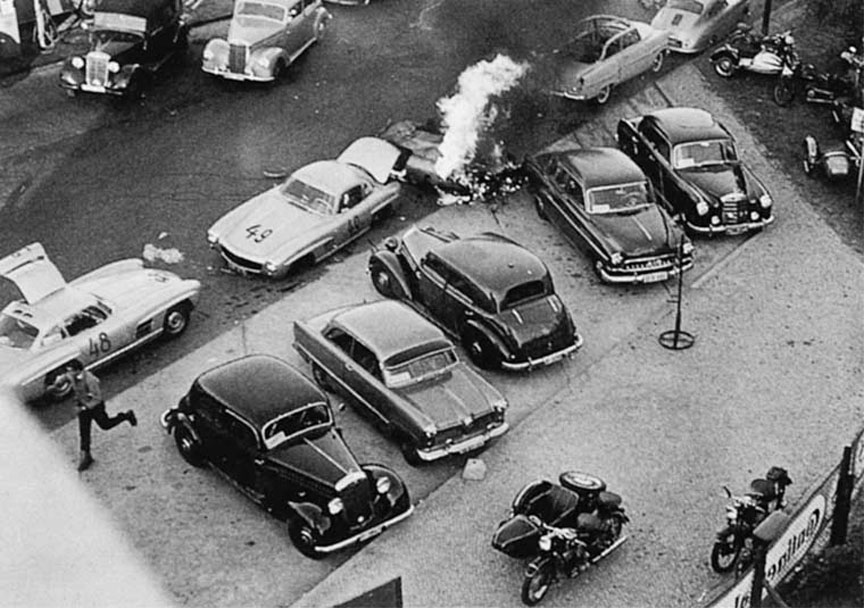
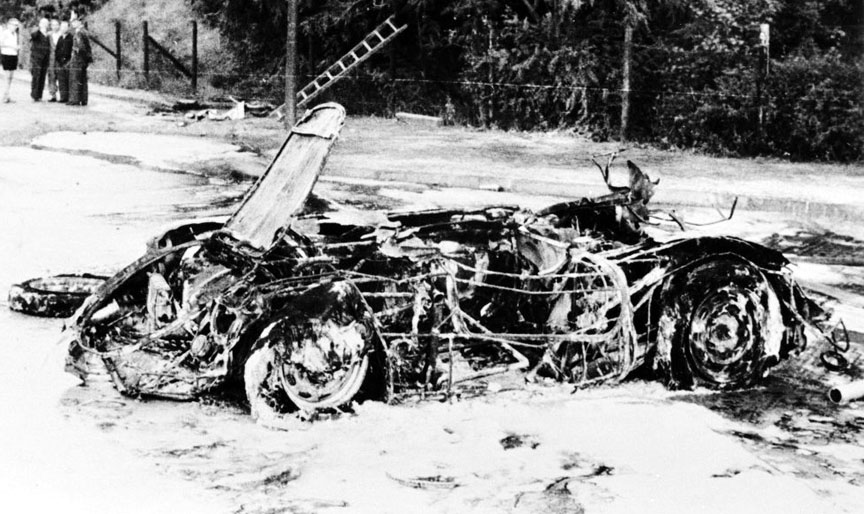
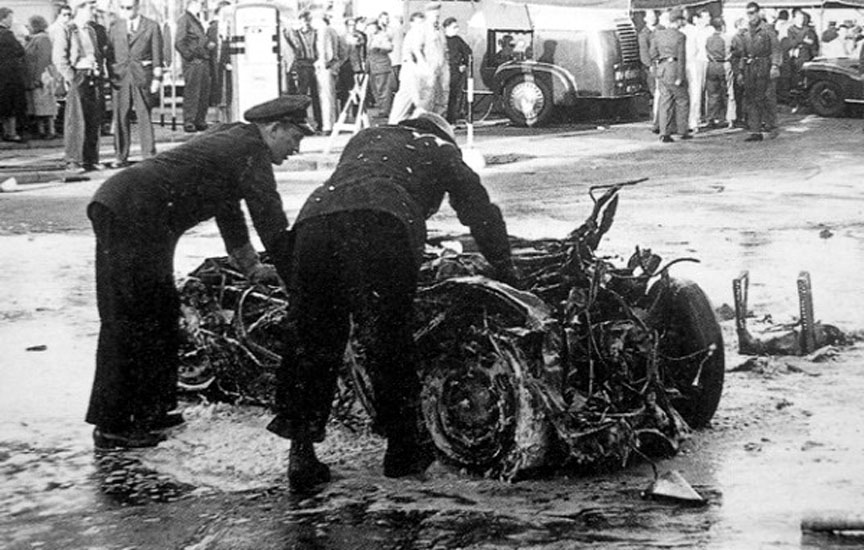
Richard von Frankenberg survived the accident and that is a complete luck. The very sad story is, that there is no Porsche 645 after September 16, 1956. Considering how much work was put into this prototype, how cool it looked and technically was, it is a real shame such a piece of art and engineering is gone forever.


